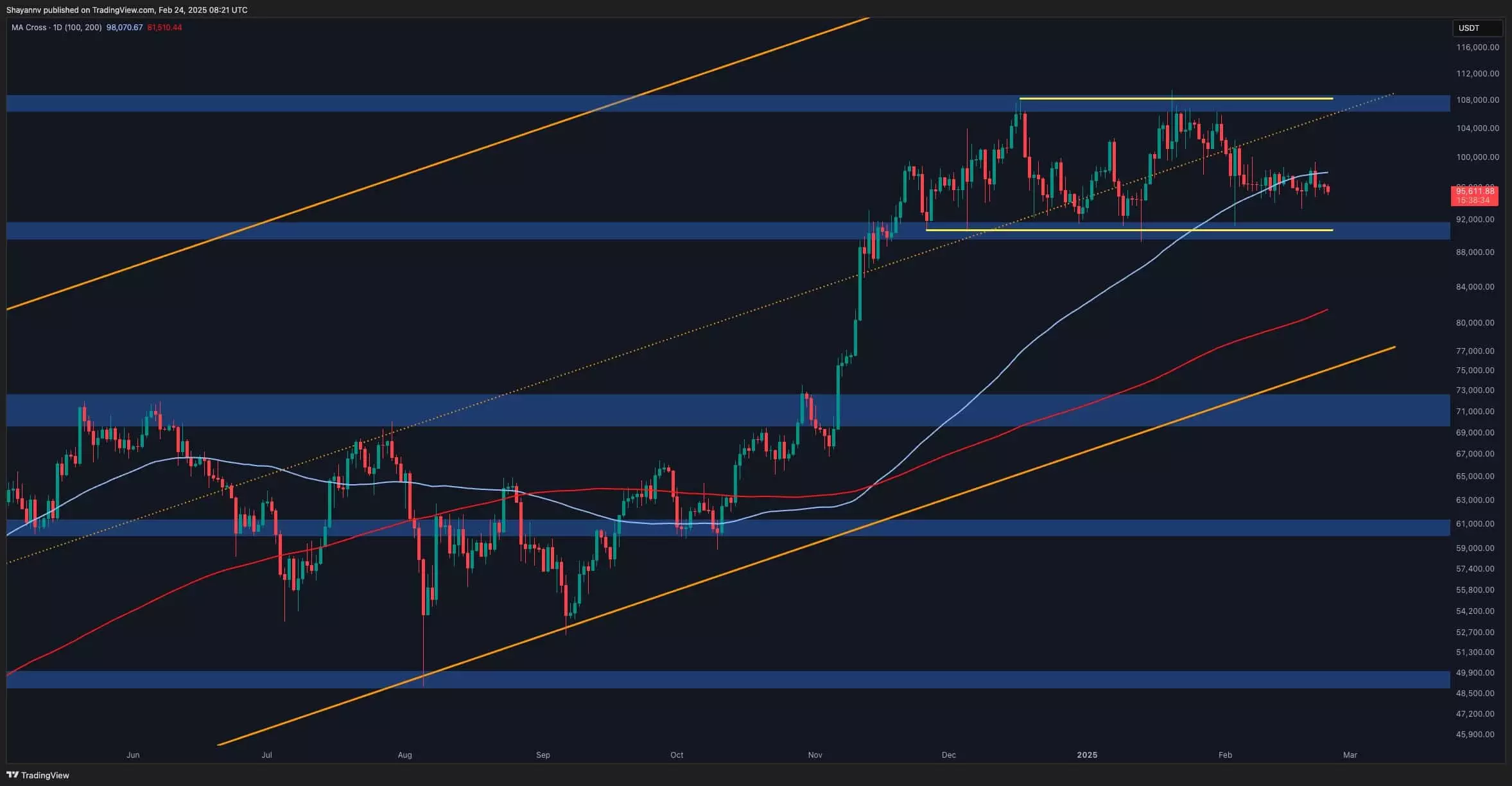Bitcoin has recently experienced a notable dip, falling below the critical 100-day moving average, which currently sits at $98,000. This movement suggests a concerning shift in market dynamics, as the cryptocurrency approaches the significant support level of $95,000. The contraction in trading activity signals a potential lack of enthusiasm among market participants, implying that Bitcoin may enter a period of consolidation rather than a strong directional move in either direction.
Although the technical indicators reveal a hint of selling pressure, recent price action appears to reflect a market that is neither decisively bullish nor bearish. Bitcoin’s ascent has faced resistance, leading to a bearish bias that raises concerns about a further decline. Observing the lower time frames indicates that Bitcoin is inching closer to the lower boundary of its ascending channel, intensifying speculation about its next move. Whether the price will find support at the critical $90,000 level remains in question, as this has historically served as a robust demand zone for the cryptocurrency.
Charts and Patterns: Key Levels to Watch
The marketplace is increasingly focusing on chart patterns and key levels as Bitcoin nears the $90,000 threshold. Recent price action hints at a possible double-top formation, with its neckline adjacent to this support zone. If Bitcoin breaks below this crucial level, it would likely trigger further downside momentum, potentially validating the bearish sentiment. The upcoming trading days will be significant, as market behavior around $90,000 could determine whether a bullish reversal occurs or a bearish continuation takes hold.
Traders are now observing closely for signs of any substantial rebound from this support level. Historically, such zones present an opportunity for buyers to step in, which could spark renewed bullish momentum. Conversely, a failure to hold this level could lead to larger sell-offs and more substantial consolidation.
The Broader Market Context: Sentiment and Geopolitical Tensions
Beyond technical factors, investor sentiment plays an integral role in Bitcoin’s market performance. The recent surge in prices stemmed from positive sentiment linked to external events, such as political developments in the U.S. However, concerns surrounding escalating geopolitical tensions have shifted investor focus toward risk-averse strategies, dampening the initial bullish momentum.
On-chain metrics indicate a decline in active addresses and overall transaction volume, raising alarms about potential investor fatigue. A pattern reminiscent of previous peaks in 2017 and 2021 could emerge if this trend continues, indicating a cycle of exhaustion among traders.
As market conditions evolve, the key question is whether Bitcoin can traverse through these various uncertainties. For a significant bullish rally to reemerge, resolution of existing geopolitical concerns is paramount, or alternatively, a compelling new catalyst must be introduced to invigorate market enthusiasm.
The current landscape for Bitcoin remains complex. Price movements near the $90,000 level will be crucial in determining its trajectory, while external factors and investor sentiment will profoundly influence market stability. The upcoming weeks may serve as a litmus test for Bitcoin’s resilience amidst a landscape of volatility and uncertainty.

